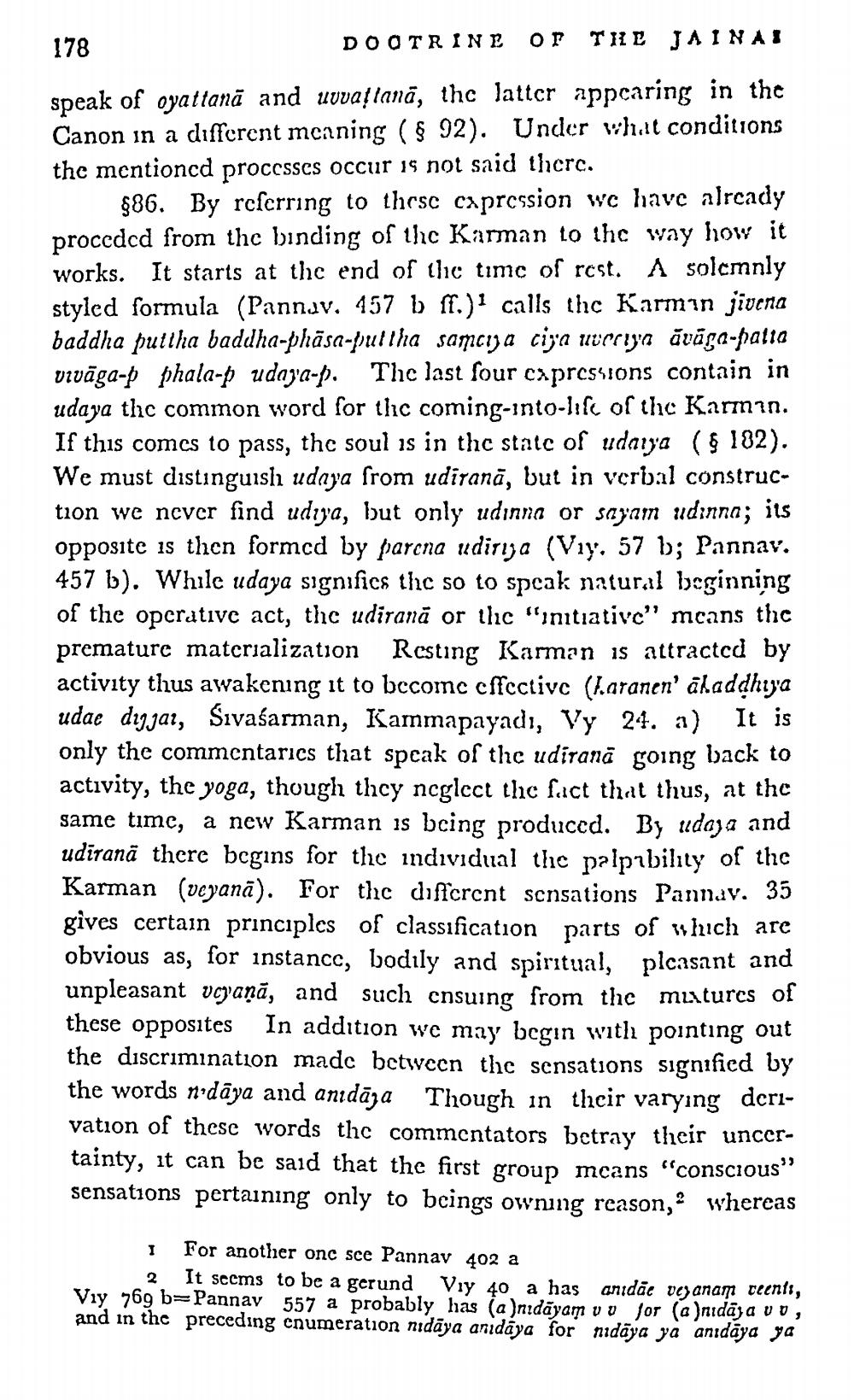________________
OF DOCTRINE
178
THE JAINAI
speak of oyattana and uvvatlana, the latter appearing in the Canon in a different meaning (§ 92). Under what conditions the mentioned processes occur is not said there.
§86. By referring to these cxpression we have already proceded from the binding of the Karman to the way how it works. It starts at the end of the time of rest. A solemnly styled formula (Pannav. 457 b ff.) calls the Karman jivena baddha puttha baddha-phasa-puttha sameya ciya uveriya āvāga-patta vivaga-p phala-p udaya-p. The last four expressions contain in udaya the common word for the coming-into-life of the Karman. If this comes to pass, the soul is in the state of udaya (§ 182). We must distinguish udaya from udirana, but in verbal construction we never find udiya, but only udinna or sayam udinna; its opposite is then formed by parena udirija (Viy. 57 b; Pannav. 457 b). While udaya signifies the so to speak natural beginning of the operative act, the udirana or the "initiative" means the premature materialization Resting Karman is attracted by activity thus awakening it to become effective (Laranen' aladdhya udae dyjat, Sivaśarman, Kammapayadı, Vy 24. a) It is only the commentaries that speak of the udirana going back to activity, the yoga, though they neglect the fact that thus, at the same time, a new Karman is being produced. By udaya and udirana there begins for the individual the palpability of the Karman (veyana). For the different sensations Pannav. 35 gives certain principles of classification parts of which are obvious as, for instance, bodily and spiritual, pleasant and unpleasant voyaṇā, and such ensuing from the mixtures of these opposites In addition we may begin with pointing out the discrimination made between the sensations signified by the words n'daya and anidaja Though in their varying derivation of these words the commentators betray their uncertainty, it can be said that the first group means "conscious" sensations pertaining only to beings owning reason,' 2 whereas
I For another one see Pannav 402 a
2
It seems to be a gerund Viy 40 a has anidae vezanam veents, Viy 769 b Pannav 557 a probably has (a)nidayam vv for (a)nidaja vv, and in the preceding enumeration nidaya anidaya for nudaya ya anıdaya ya




